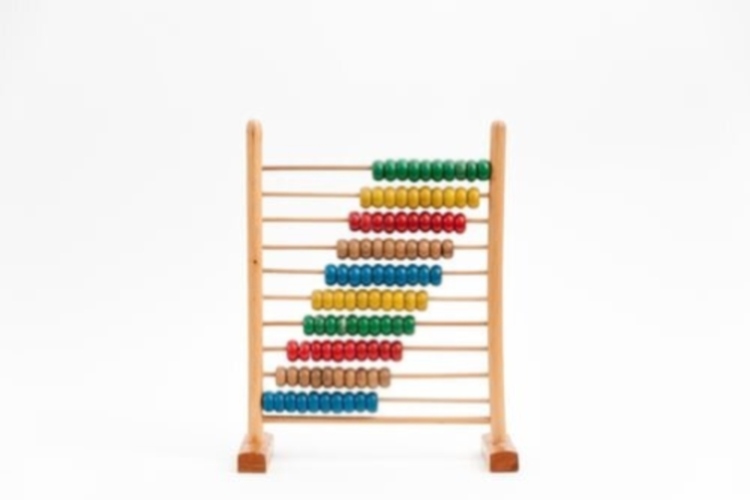An abacus is typically divided into two sections: upper and lower. This improves mental calculations and allows for faster addition, subtraction, division, and multiplication.
Although everybody knows how useful an abacus is for math, there are several unnoticed advantages that support a child’s overall growth. Since the early years of a child’s growth are crucial, enlisting them in abacus classes early on can be extremely beneficial.
In this article, you will explore abacus learning for kids along with some abacus activities for preschoolers.
Abacus for Kids
People used the abacus for simple arithmetic and billing before the calculator. Although smartphones and machines have made abacuses obsolete, parents and teachers should still use them to teach kids how to count, add and subtract, and consider decimal places. You should make your own at home using simple craft store supplies.
Learn how to make an abacus for kids in the last section.
Abacus Activities for Preschoolers
Basic Counting
One of the first basic math skills that kids learn is counting. The beads on an abacus offer a fun, hands-on way for toddlers and preschoolers to practice this basic early math ability.

Simple Addition & Subtraction
Abacus may be used by preschoolers for a number of addition and subtraction tasks. The beads on an abacus offer an excellent visual and deceptive medium that aids in their understanding of these principles.
Also Read: Kids Personality Development Classes: Help Them Transform Their Personalities For a Better Future
Skip Counting
Counting by twos, fives, and tens is much more enjoyable with an abacus than with workbooks or picture books. This is particularly true for students who learn by activity.
Beginning Multiplication
And young children will learn the fundamentals of multiplication, which is essentially just repetitive addition. The abacus will assist them in visualising, for starters, that 3 classes of 2 (or 2+2+2) equals 3 x 2.
Designs & Patterns
Toddlers and preschoolers will also use the abacus beads to create shapes and designs through their own stage of development.
Abacus Learning for Kids: Why is it Important?
Increases Concentration Level
When learning to use an abacus to perform basic mathematical operations, the infant is also learning to block out all distractions around them. If they have perfected the use of the abacus, they progress to a basic simulation method that allows them to mentally assume the Abacus and perform calculations. This, in particular, improves their focus ever further. These abilities transfer to other areas of life, and the kid can quickly concentrate on something that comes their way, whether at school or at home.

Better Observation and Listening
A kid who has been studying Abacus for math will begin processing numbers with only one look with the aid of flashcard preparation, one of the mental training exercises, and when solving mental mathematical problems. The child’s observational abilities improve as the training progresses. Similarly, when the children are conditioned to hear the numbers only once when addressing questions, their hearing abilities improve. This helps the children to properly listen to the questions and improves their overall listening abilities.
Improves Imagination
Children are allowed to use a robotic abacus from the start of their education. This allows them to solve problems easily by imagining an abacus. The more the child uses this approach, the greater their creativity and visualisation abilities will get.
Sharpens Memory
During number learning and solving problems, a child must memorise many pictures. Until giving the final response, students who are studying Abacus appear to recall the final picture constructed when solving the dilemma. A child’s ability to memorise everything they see grows over time which can also contribute to it becoming a visual memory.
Also Read: Best Online Coding Classes for Kids: A Complete Guide to Get the Best
Improves Speed and Accuracy
Most competitive tests are timed, and the child, despite his or her age, must be able to provide reliable results in a limited period of time. Learning Abacus will show a child how to maximise their time while being precise.
How to Make Abacus for Kids?
Step 1
To make a square box, glue four jumbo craft sticks around each other. To keep the sticks in position, use hot glue. You may also bypass this process by purchasing a photo frame and merely removing the backing.

Before mounting the abacus, spray the popsicle sticks with acrylic paint.
Step 2
Thread 10 beads, 5 in one colour and 5 in the other, onto a pipe cleaner. On one pipe cleaner, for say, you’ll get 5 blue beads followed by 5 purple beads. Loop until you have a total of ten pipe cleaners with ten beads each.
This is an excellent opportunity for children to practise their motor skills.
If you don’t have any pipe cleaners, you can substitute string or tape.
Step 3
Organise the pipe cleaners in the frame in a series. They should be equally spaced and not overlapping in order for you to be able to pass the beads on each pipe cleaner. Tie the ends from each pipe cleaner across the frame’s edges. To keep the pipe cleaner from sliding down the craft handle, place a drop of super glue below each end. With blades, trim some excess pipe cleaner and strap the end tightly around the handle.
Conclusion
Abacus knowledge not only aids in simple arithmetic such as addition, multiplication, subtraction, and division, but it also aids in the accurate calculation of decimal marks, negative ones, and many more. Children who train to use an abacus use their hand and a beaded instrument to count numbers.
If your kid is struggling with common subjects, you should check out The Real School Of Montessoriwebsite. You can also find fun learning articles in the blog section of this brand. Start your kids training with The Real School Of Montessori now.
Also Read: Vedic Maths Tricks for Kids: An Innovative Way of Learning Mathematics








Good activities for preschool kids.